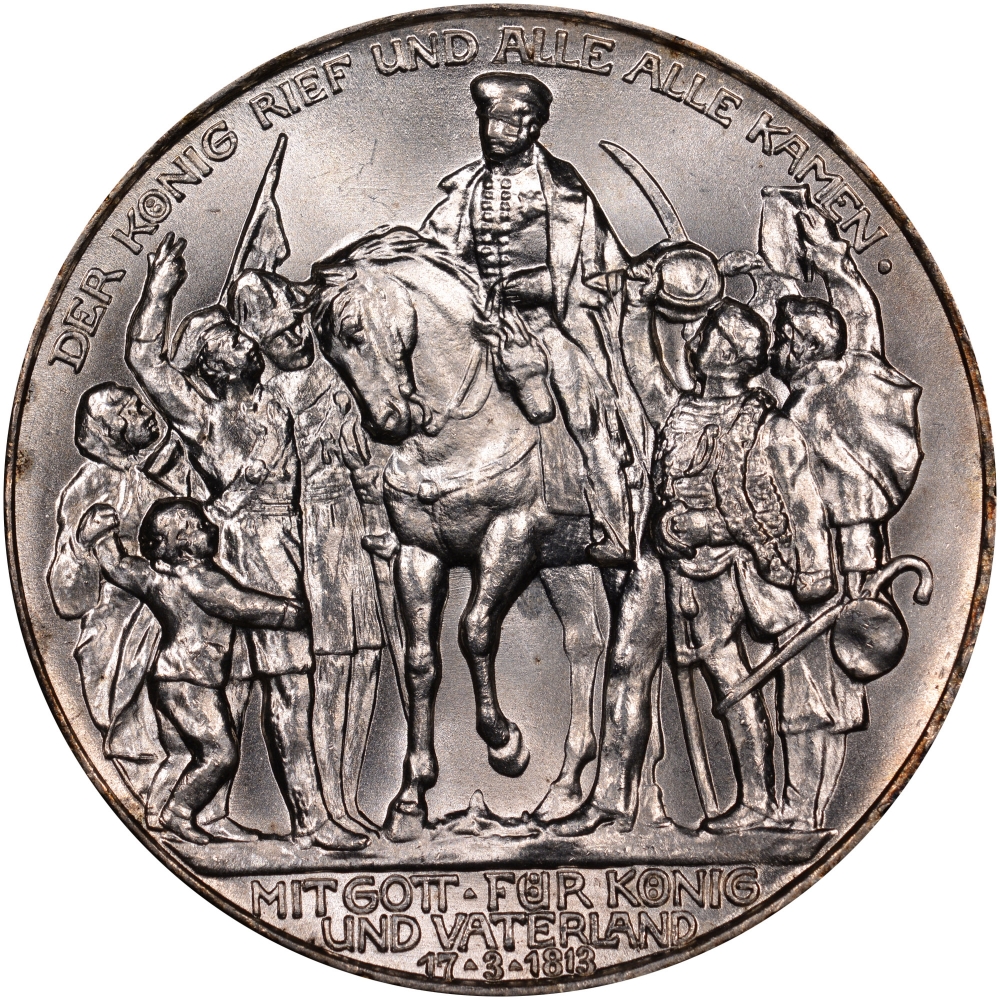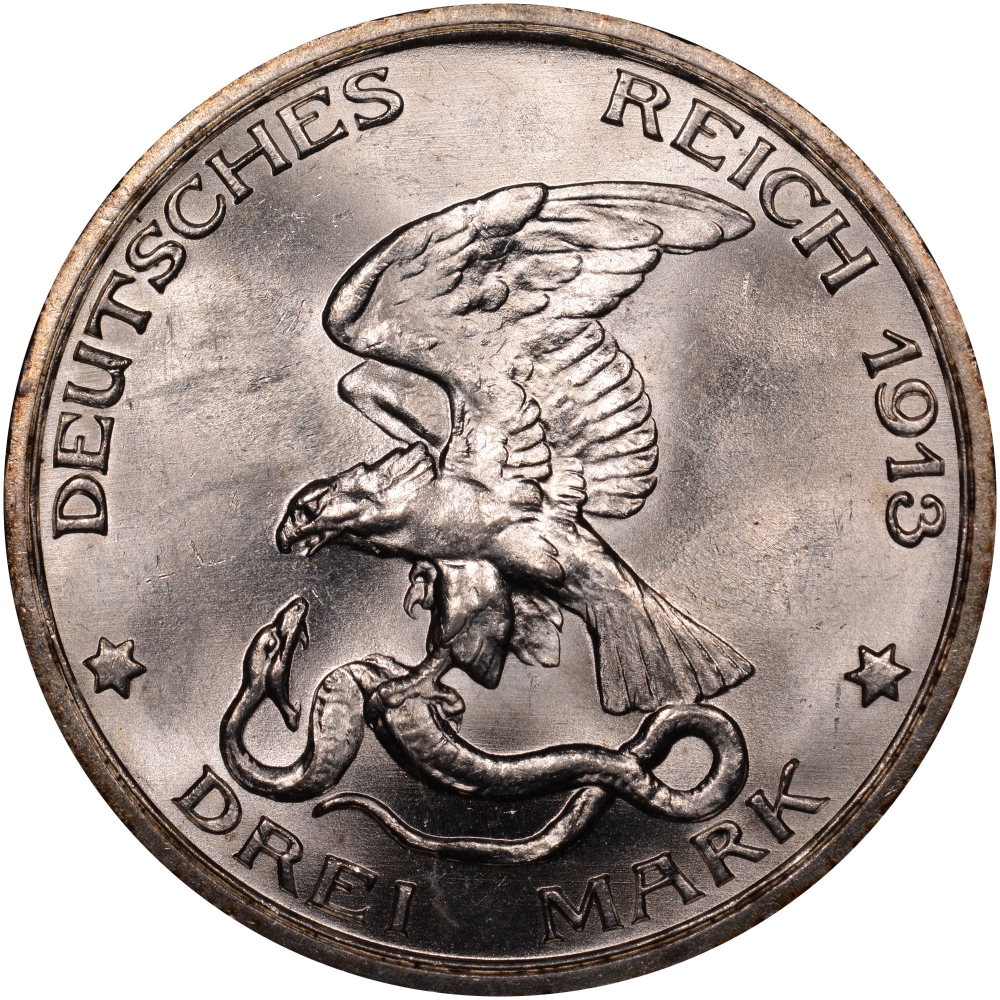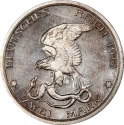You are about to finish your registration. Please check your mailbox (including spam folder). There should be a letter with a confirmation link. Check setting to make sure that your e-mail address is correct.
Send letter againDescription
This coin celebrates the 100th anniversary of the Prussian mobilization against Napoleon.
17 March 1813 – the day Alexander I of Russia arrived in the Hoflager of Frederick William III of Prussia – Prussia declared war on France. Members of the Sixth Coalition fought a series of battles in Germany against the French Emperor Napoleon and his Marshals.
With the help of the Prussian army, Napoleon and the French army were defeated at the Battle of Leipzig in October of 1813. Ironically, within a year of the time the coins were struck, Prussia, now part of Germany, would again be at war with France. This time however, the French, not the German forces that would be victorious. With Germany's disastrous loss in the war, William or Wilhelm II was forced to abdicate and lived his remaining days in seclusion in the Netherlands. These were the last commemorative coins issued by Prussia.
Obverse

|
Obverse shows King Frederick William III on horseback being hailed by soldiers, civilians, and children. The legend at the top "König Rief Und Alle Alle Kamen" (The King Called and All Came) and the date "17.3.1813" refers to his call to arms against Napoleon. DER KÖNIG RIEF UND ALLE ALLE KAMEN · |
|---|---|
Reverse

|
The reverseof this coin depicts the eagle defeating a snake with the inscription DEUTSCHES REICH (German Empire) above, date to the right and the denominational value DREI MARK below. DEUTSCHES REICH 1913 |
| Edge |
Gott mit uns ("God with us") is a phrase commonly used on armour in the German military from the German Empire to the end of the Third Reich, although its historical origins are far older. It was used for the first time in German by the Teutonic Order. In the 17th century, the phrase Gott mit uns was used as a 'field word', a means of recognition akin to a password, by the army of Gustavus Adolphus at the battles of Breitenfeld (1631), Lützen (1632) and Wittstock (1636) in the Thirty Years' War. In 1701, Frederick I of Prussia changed his coat of arms as Prince-Elector of Brandenburg. The electoral scepter had its own shield under the electoral cap. Below, the motto Gott mit uns appeared on the pedestal. GOTT MIT UNS |
Related coins
100th Anniversary of the Prussians Entering the Napoleonic War



